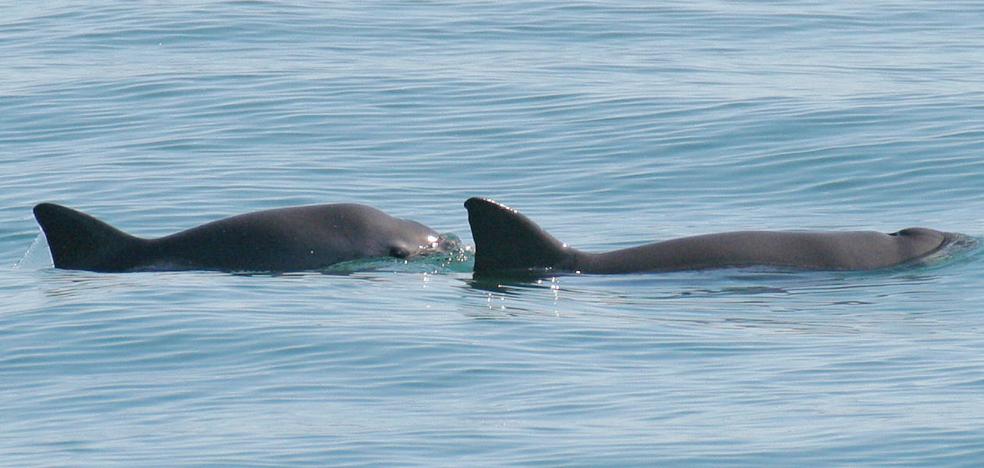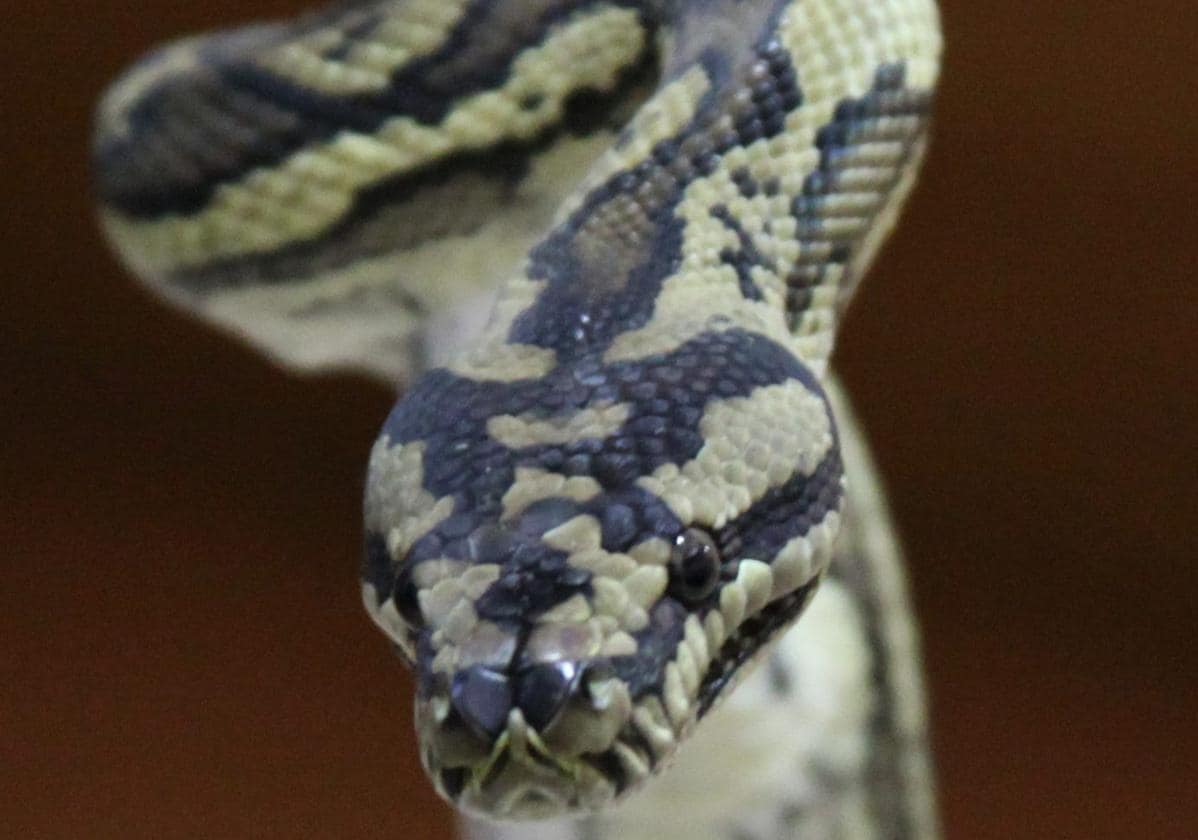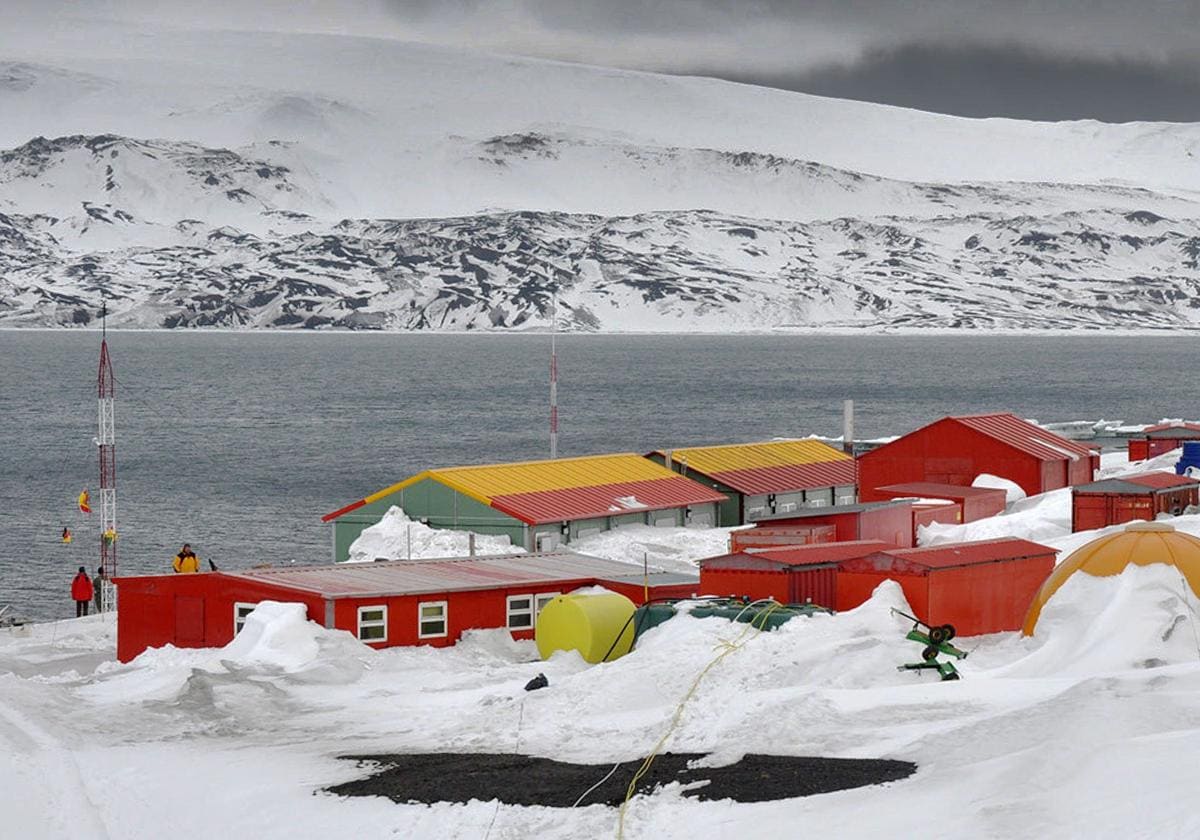The ten vaquitas that remain could be enough to recover the species

A vaquita porpoise and her calf in the waters of San Felipe, Mexico. /
Its genetic diversity would allow this small cetacean to get by on its own if illegal fishing in the Gulf of California ends
There are only ten vaquitas left in the Gulf of California (Mexico). Ten specimens of 'Phocoena sinus', the smallest and most threatened cetacean in the world. They are very few, but they retain enough genetic wealth for the species to recover, according to a study published in the journal 'Science'. “Genetically, they still have the diversity that allowed them to thrive for hundreds of thousands of years until gillnets came along,” says Jacqueline Robinson, a researcher at the University of California, San Francisco and one of the authors of the research.
The authors of the new study have reached this conclusion after analyzing the genomes of 20 specimens from tissue samples taken since 1985. The vaquita porpoise can measure up to 1.5 meters and weigh 50 kilos. It is a solitary animal that feeds on fish and squid, and is not usually seen in groups of more than two or three individuals. Its habitat is the shallow waters of the northern Gulf of California or Sea of Cortez, bounded on the west by the Baja California peninsula and on the east by the states of Sonora and Sinaloa. According to previous genetic studies, the species arose about 2.5 million years ago and, during the last 250,000, has never exceeded 5,000 individuals.
"At such small population sizes, very gradual inbreeding between distant relatives helps facilitate the removal or purging of harmful recessive mutations without much negative effect on the species. That the vaquita is ideal for recovering from a severe population decline due to the small size of its historical population may be somewhat counterintuitive, but it has broad support in genetic research," Lorenzo Rojas-Bracho, from the Commission, explains to this newspaper. National Protected Natural Areas of Mexico and co-author of the study.
"We have to break with the paradigm that small populations are doomed to extinction," says the Mexican biologist, who has been dedicated to saving the vaquita for two decades. He cites California channel island foxes, the California condor, and the northern elephant seal as examples. «In this last case, it is estimated that its population was reduced to about 20 or 30 individuals. With very low genetic variability, it recovered to around 150,000”, indicates Rojas-Bracho.
Illegal fishing and gillnets
As early as the early 1990s "it was known that the incidental mortality of vaquitas (as a result of fishing) was unsustainable." In 1997 it was estimated that there were about 600 individuals, in 2015 97 were censused and two years later 67% of the population was suddenly lost. From observations in the "supposedly zero catch" zone of the Gulf of California, scientists last year estimated that there were "about seven or eight individuals left, including one or two hatchlings," Rojas-Bracho says.
The great threat to the vaquita porpoise is gill nets, vertical gear anchored to the bottom that rise up like walls in which fish and other animals are trapped. In the northern Gulf of California, they have been banned since 2017, but illegal fishermen use them to catch totoaba or white croaker, whose swim bladder is in high demand in China and Hong Kong for its healing properties that have never been demonstrated. Vaquitas, dolphins, whales and other animals die trapped in the gear of illegal totoaba fishermen, who can earn thousands of dollars in a day's work.
The situation of the vaquita is a consequence of the fact that its conservation has not been considered a priority until recently. "We were never able to count on the support of the fishing authorities," lamented Rojas-Bracho, who lacked an institutional commitment to develop, together with the fishermen, alternative gear to gillnets. “Without alternative fishing gear so that fishermen can bring food to the table and with organized crime trafficking in the totoaba swim bladder, the situation is very complicated,” acknowledges the biologist, who, even so, trusts in the recovery of the species if accidental deaths are eliminated. “When you work in conservation, you always have to have faith. If not, it is better to look for another job.
«The survival of individuals, and of the species, is in our hands. There is a high probability that genetically they can recover if we protect them from gillnets and allow the species to recover as soon as possible to its historical numbers, "says Phillip Morin, a geneticist at the National Oceanic and Atmospheric Administration of the United States. and co-author of the research.











